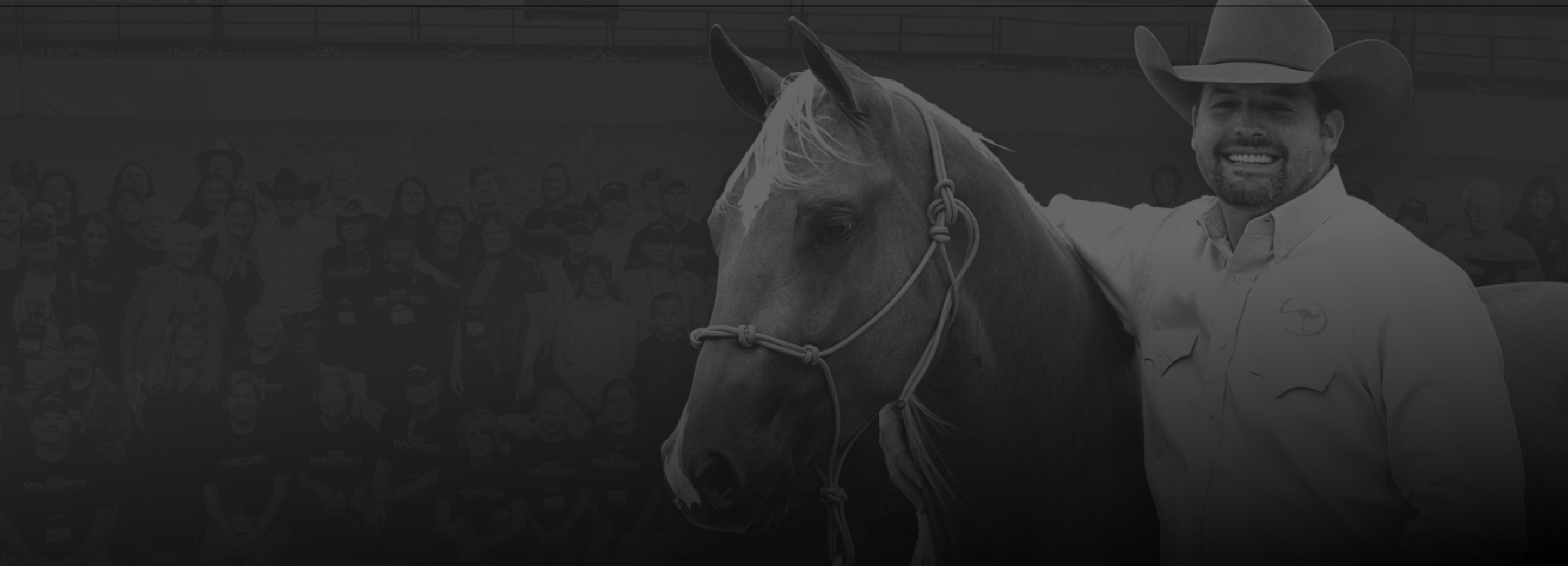Fix Your Horse’s Bucking Problem
Clinton Anderson from Downunder Horsemanship has a method to address problem horses and, more commonly, problem owners. He believes that getting horses to behave is simple; it’s training a person that’s the real trick. Clinton loves horses and believes they’re some of the most beautiful creatures. More importantly, he understands that at times, they can be dangerous, especially when they don’t respect their owners. Clinton works with clients using the Downunder Horsemanship Method to help them gain their horse’s respect so they can develop a safe, healthy partnership. He tackles some of the most challenging situations with problem horses such as a bucking horse and with problem owners. In this week’s episode, Clinton works with a horse named Soxie, a 5-year-old Paint gelding who has developed a dangerous bucking problem.

Mike and Julie have been close with their horse Soxie since the day the gelding was born. Julie started training him early with fundamentals groundwork exercises without a saddle and found him extremely responsive—he was a fast learner. Unfortunately, this meant that Soxie was also quick to learn a bad habit that put a wedge between him and Julie. Soxie started bucking so badly that Julie refused to get on him. Instead, she searched for a solution that will repair her and Soxie’s partnership and make it safe for her to continue his training.
Clinton begins his instruction by informing Julie that horse bucking is a reaction; it’s a sign that Soxie isn’t using the thinking side of his brain. Instead, he’s using the reactive side of his brain. To change that, Julie needs to gain his respect and get him to start thinking, not reacting. Clinton starts this process with groundwork to establish a partnership and line of communication with Soxie. This is also a great way to establish a starting point. To begin, he teaches Soxie the exercise Lunging for Respect Stage One. In order to gain a horse’s respect and trust, you have to move their feet forwards, backwards, left and right, which is what Clinton accomplishes with Soxie while practicing Lunging for Respect Stage One. Clinton stresses to Julie how important it is to be serious about the training.
When Clinton has earned Soxie’s respect and has the gelding tuned in to him, he works on desensitizing him to pressure around his flank. To do this, he uses his 23-foot Long Line that has a two-inch ring on the end and loops it around Soxie’s flank. His goal is to get Soxie moving out around the roundpen and desensitize him to the pressure.
When Soxie is no longer reacting to pressure around his flank, the next step is to get on and ride him. This requires two people: one on his back, a passenger, and an assistant on the ground directing Soxie’s feet. While the person in the saddle allows the horse to get comfortable with a rider, the person on the ground cues the horse to go forward and move around the roundpen. Because Clinton taught Soxie how to respond to cues on the ground, it’s an easy transition for the gelding. At one point during the ride, Soxie starts to buck a little bit, but Clinton and the rider work together to get Soxie to safely stop and yield and continue on with the lesson.
At the end of their training session, Clinton feels confident that Soxie has a good foundation for Julie and Mike to continue to build on. While this is good news, he reminds Julie and Mike that it doesn’t mean they’re out of the woodworks just yet. Training takes patience and continuity. They need to keep working with Soxie to see more success. Using the Downunder Horsemanship Method, you can get extraordinary results and fix problem behavior in any horse in the world. Just remember to keep practicing and always be a leader who is in control for your horse.
If you’re interested in learning more about the Clinton Anderson training method, or any of the products featured in this episode, check out his website and browse the ultimate collection of kits.




